By Anhad Viswanath, Associate ASLA
This post discusses “Reed City’s Exhilarating Thrust,” a design concept I crafted while a student at Michigan State University that illustrates the wonder and excitement that the race circuit brings. The design includes a four-mile racetrack with elevated inclines over an existing road, housing, and spaces for residents and visitors to socialize and enjoy the races. Pedestrian bridges, trail connections, and a bus transit hub create multimodal connectivity.
Globally, many airports face an uncertain future, and some are at the brink of closure. In the United States, there are 20,000 functional airports (private, commercial, and military), and 1,000 more that are abandoned, on-hold, or underused. This represents both a significant issue moving forward, and also a significant opportunity for reimagining these built environments.
According to a Developments in the Built Environment article on the former Hellenikon Airport in Athens—now being developed into Ellinikon Metropolitan Park—airports, or airfields, are a type of built environment where there is a relatively low density of infrastructure and are characterized by open spaces. Airports cover large portions of land and encompass various types of facilities that can often exacerbate environmental issues for surrounding areas. This makes airports, especially abandoned airports, capable of damaging the environment and wasting land and resources.
Landscape architects have long been interested in reimagining abandoned spaces. Some interesting ways in which abandoned land, like former airports, are reinvented include parks, gardens, and playgrounds, offering recreational activities, including biking. In turn, remaking abandoned spaces into new landscapes not only helps in reusing and utilizing resources more effectively, but also provides an opportunity to craft innovative places.
A couple of case studies highlight amazing ways in which abandoned airfields have been imagined. One excellent example is Tempelhof Airport in Berlin, Germany, part of which was reimagined in 2015 to serve as a location for Formula E races and events. The program elements include a 17-turn track, a park, and an event center. Another example is Xuhui Runway Park in Shanghai, designed by Sasaki.

Goa Dabolim International Airport, Goa, India / image: courtesy of Anhad Viswanath
Fall 2023 Senior Capstone Project: Reed City and Nartron Airfield
This project was an independent evidence-based adaptive reuse design proposal for my Environmental Design Studio class in Fall 2023. The design involved reimagining an abandoned airfield in Northern Michigan into a sports car race circuit that would serve as an amazing tourist landmark.

Race track design / image: Anhad Viswanath
The project site is Nartron Airfield in Reed City, Osceola County. The airfield is identified on pilot Paul Freeman’s Abandoned & Little-Known Airfields website. In 1945, James T. Miller started Miller Industries, and subsequently opened Miller Airport to streamline business operations with his customers through air connectivity. Growth in business and sales led to the formation of Miller International Airport that connected Reed City with Grand Rapids and Chicago. James Miller then sold off the company to Norman Rautiola, the founder of Nartron Corp., in the 1980s. However, Rautiola found a new opportunity elsewhere and shifted operations north, abandoning the airfield.
The airfield has been abandoned for thirty years; the site has a cracked runway and an unused terminal building. Yet, it is well placed in between two state highways and two state trails. That makes the airfield accessible and in a position to bring in more people and tourists to the area. Reed City is known for campgrounds and some interesting outdoor landmarks, including the Purple Heart Trail.
Exploring activities popular in northern Michigan, including winter sports, sparked the idea to bring something novel and global to Northern Michigan that would contribute to tourism. The square footage of the airfield and the proximity to Grand Rapids and Cadillac presented an intriguing opportunity to design a race circuit that would attract more tourists from different parts of the state and beyond, and provide a vibrant and exciting ambience.
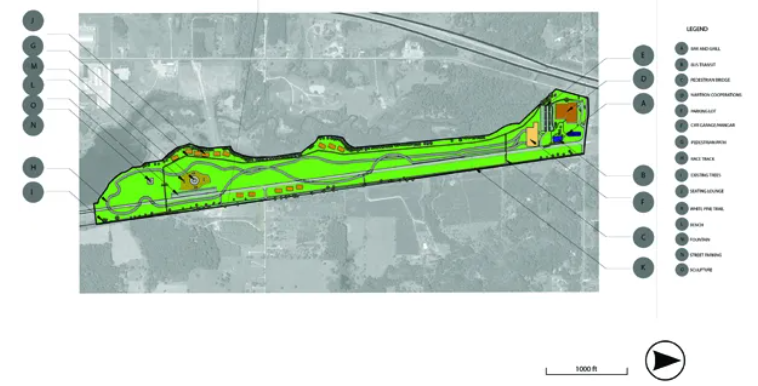
Master plan / image: Anhad Viswanath
Design Concept
The design brings together a concept that I crafted, “Reed City’s Exhilarating Thrust,” illustrating the wonder and excitement that the race circuit brings. The design includes a four-mile racetrack with elevated inclines over the existing Old US 131 road. There are some condos for users to socialize, eat, and enjoy the race. The pedestrian bridges streamline connectivity with the White Pine Trail, along with a bus transit hub to support bus routes and add multimodal connectivity to the site for tourists.
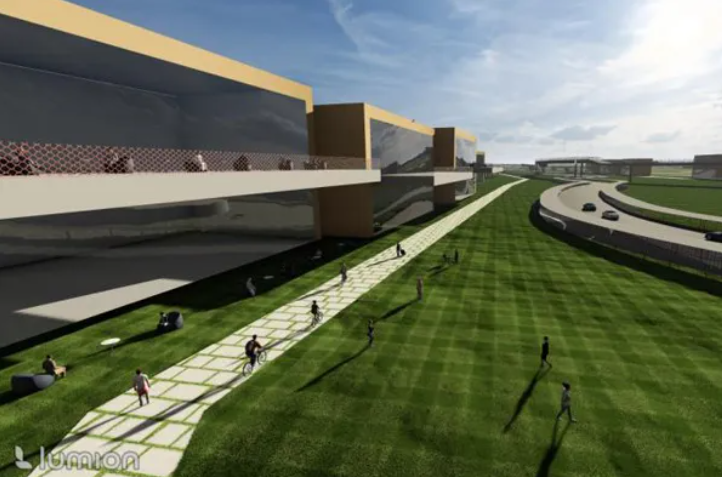
View of the condos / image: Anhad Viswanath
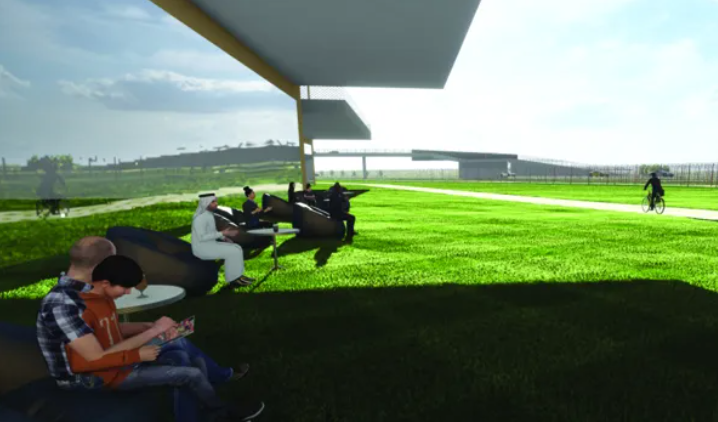
Ground seating at the condos / image: Anhad Viswanath
Recently, I was reviewing my design proposal and exploring how I could continue to develop the idea as an emerging professional. After reading about sustainability in race circuits and Formula 1’s pledge to work towards a net zero carbon footprint, I began to contemplate how I could refine my design to add important sustainable measures and make the circuit environmentally friendly.

Pedestrian path / image: Anhad Viswanath
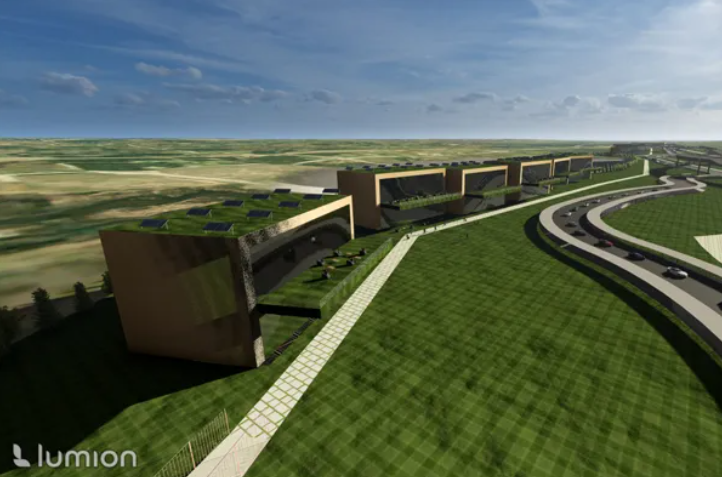
Condos with green roofs and solar panels / image: Anhad Viswanath
I saw that there was room for more sustainable techniques for better energy efficiency. That led me to add solar panels to the roofs of the condos. Additionally, green roofs can reduce the heat island effect during the summer and contribute to reducing the carbon footprint. Moreover, the vegetative surface of the green roofs could absorb sound and contribute towards reducing the impact of noise pollution caused by the sports car engines.
—
Anhad Viswanath, Associate ASLA, is a Michigan State University landscape architecture program graduate, originally from India. I chose landscape architecture because the field offers interesting avenues for design, art, the environment, and society, which are my interest points. I spent seven years of my childhood in the Netherlands. During my time there, I witnessed landscape architects and agriculturists employing interesting means, such as marshes, dikes, and adding volumes of sand to land near the seashores, to protect the land from flood related events. I saw how the profession is very important in helping the country’s landscape become and remain resilient and regenerative, especially as the country is situated slightly below sea level. I would like to specialize in landscape and urban design where I can design gardens, parks, playgrounds and urban spaces that can encourage people to embrace the natural environment and improve the lives of communities. My capstone project in my graduating semester allowed me to explore adaptive reuse and eventually discover my passion for reimagining airfields and underutilized developed land as a part of sustainable design.
Featured Image: ASLA 2021 Professional Urban Design Honor Award. Xuhui Runway Park. Shanghai, China. Sasaki / image: Insaw Photography
Published in Blog, Cover Story, Featured


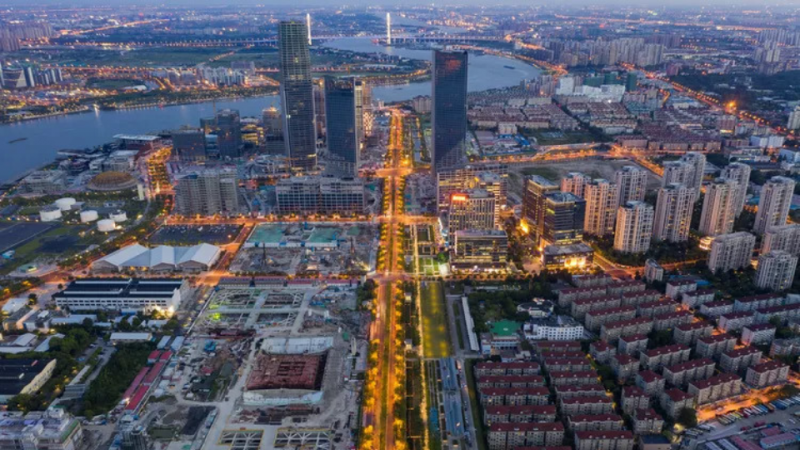

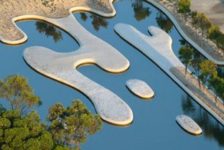
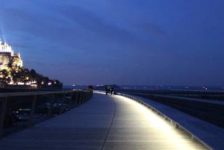

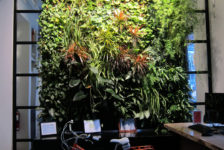
Pingback: Toronto is turning an old airport into a sprawling new neighborhood - McKinney News Source